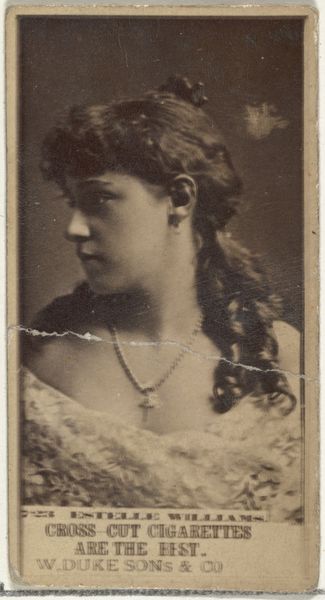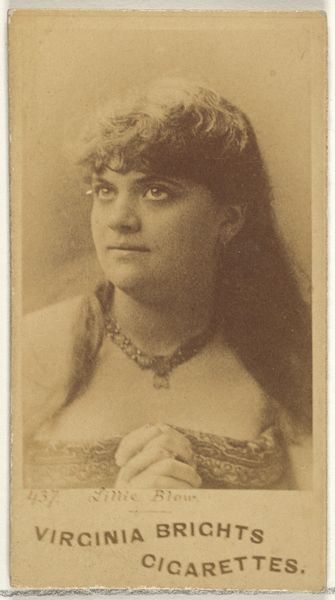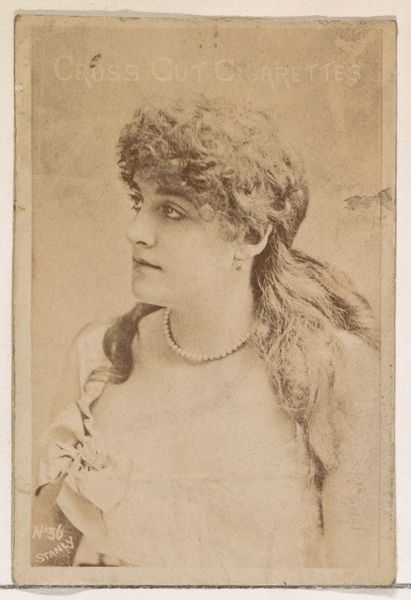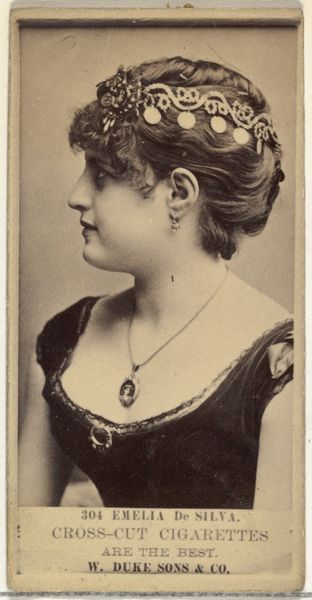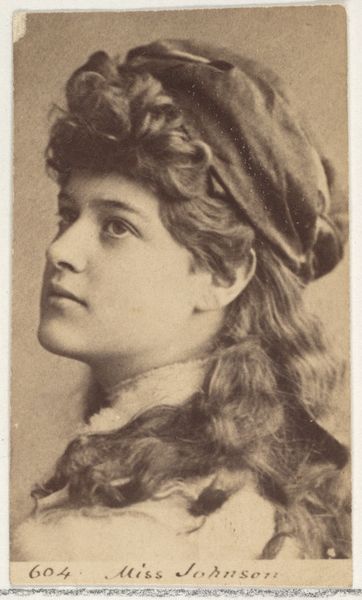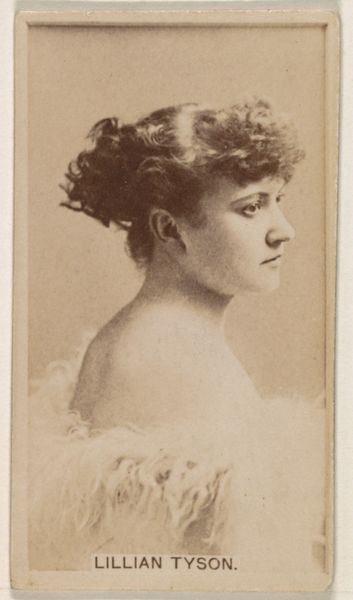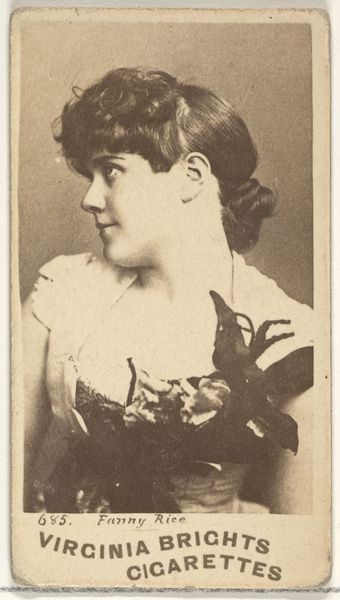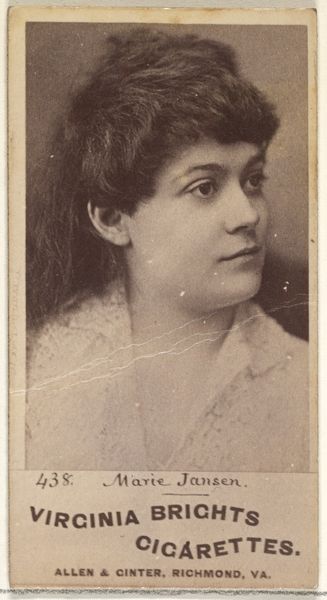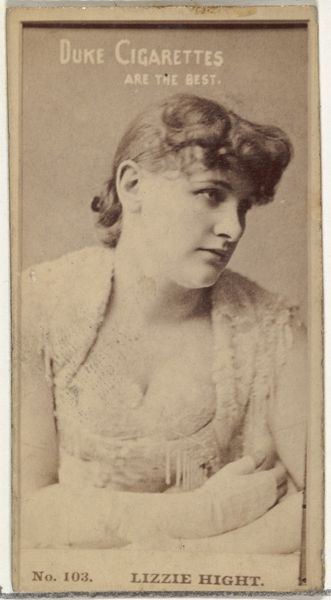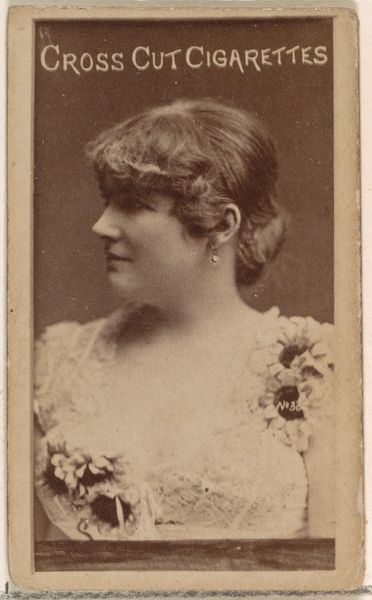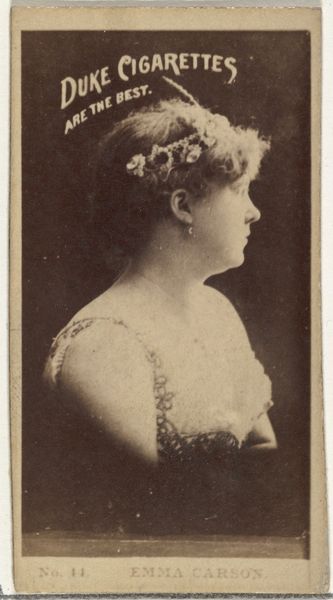
Card Number 8, from the Actors and Actresses series (N145-1) issued by Duke Sons & Co. to promote Cross Cut Cigarettes 1880s
0:00
0:00
drawing, print, photography
#
portrait
#
drawing
# print
#
photography
#
men
#
portrait drawing
#
profile
Dimensions: Sheet: 2 1/2 × 1 3/8 in. (6.4 × 3.5 cm)
Copyright: Public Domain
Curator: This is Card Number 8 from the "Actors and Actresses" series (N145-1), created by W. Duke, Sons & Co. in the 1880s. These cards were issued to promote Cross Cut Cigarettes and form a part of a broader phenomenon linking consumption, celebrity, and visual culture. Editor: The first thing that strikes me is the intimacy of it. It’s a sepia-toned profile, a young woman with a delicate cross necklace, gazing slightly downward. It feels like a stolen moment. There is something really sentimental about the soft details, and that direct connection of marketing, performance, and gender. Curator: Absolutely. The portrait drawing aesthetic evokes a sense of refinement, which ties into the way tobacco companies were then trying to market cigarettes. Note how the “Cross Cut Cigarettes” brand name at the top visually anchors the card and its cultural meaning. It shows us how imagery can be deployed to cultivate a desire around certain commodities. Editor: It’s also quite telling, I think, that actors and actresses were used as selling points. Their image becomes part of the product. The ideal of the 'actress'—her beauty, perceived talent, perceived social status—it’s all consumed along with the cigarette. She isn't really there as herself. She is literally on the packaging. Curator: Precisely. These cards weren't merely decorative, they circulated ideas about fame and beauty. The distribution method, included in cigarette packs, broadened access to images and helps us see how visual culture started seeping into everyday life. Think of it as a nascent form of today’s digital influencer culture, but rendered through print media. Editor: And the idea that women’s image, even with that overt cross necklace suggesting piety or virtue, could be essentially "bought" by the company really points to the objectification inherent in early marketing strategies, in the commodification of the artist's image. I find this both intriguing and disquieting. Curator: That uneasy tension between artistry and commerce is central to understanding this piece. Editor: Reflecting on it all, it becomes clear these cigarette cards offer a lens to analyze issues like gender roles, celebrity culture, and the marketing strategies of a bygone era that still have implications in our digital age. Curator: A truly perceptive point, prompting us to further scrutinize the hidden messages in images and their societal echoes that linger even now.
Comments
No comments
Be the first to comment and join the conversation on the ultimate creative platform.
